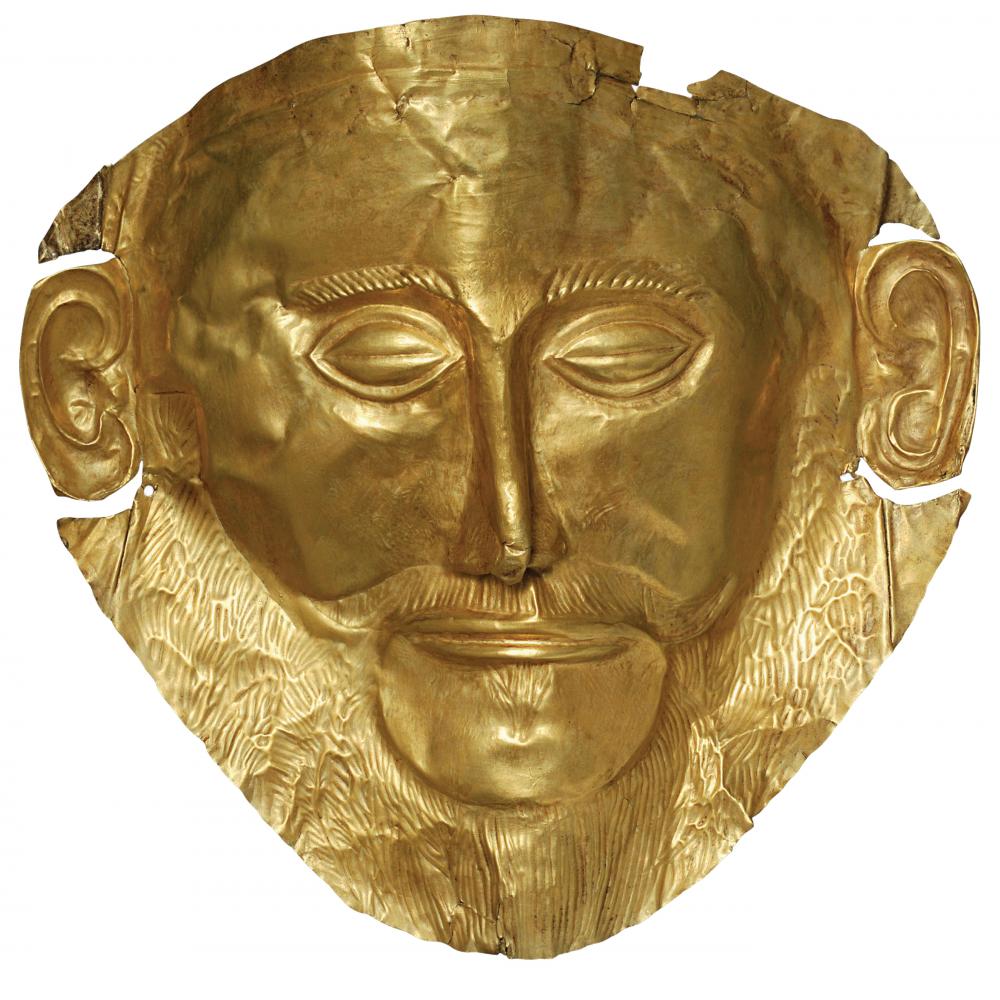In 1876, Heinrich Schliemann made an extraordinary announcement. Schliemann was a famous German archaeologist. A short time earlier he had uncovered artifacts near Hisarlık, Turkey, leading to the positive identification of the site of Troy. This time, in Greece, he reported an even greater discovery: the death mask of Agamemnon.
It was a funerary mask with a skull underneath. “I have gazed into the eyes of Agamemnon,” Schliemann said afterward with a touch of drama.
According to the Iliad, Agamemnon was the king who led the Greeks to victory against the Trojans. The Trojan War took place in the thirteenth century BCE. The mask that Schliemann discovered, however, predated this period by several centuries. Yet it provided valuable evidence about Mycenaean culture, its commerce, and the art of the late Bronze Age.
In the same excavation, Schliemann also found the mask shown above. It, too, belonged to the Mycenaean Age, and struck many as seeming nobler and handsomer. In the press, this one came to be known as the Mask of Agamemnon, a name that stuck.
“The Greeks,” an exhibit based on more than 500 artifacts, many of which are on loan from the Museum of Archaeology in Athens, has been touring Canada and the United States for the past two years, and is now in its final port of call, Explorer’s Hall at the National Geographic Society in Washington, D.C.


